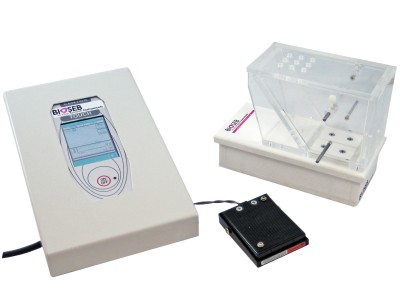Authors
L. Vaysse, J.C. Sol, Y. Lazorthes, M. Courtade-Saidi, M.J. Eaton et al.
Lab
Laboratory of Approches expérimentales et Thérapeutiques des Douleurs Neuropathiques, Toulouse, France.
Journal
Neuroscience Research
Abstract
Current understanding of chronic pain points a decrease in level of the inhibitory neurotransmitter GABA, in the spinal dorsal horn, leading to an imbalance between excitatory and inhibitory pathways. A subcloned derivative of the human NT2 cell line (hNT2.17) which, after neuronal differentiation, secretes different inhibitory neurotransmitters such as GABA and glycine has been recently isolated. In this study, we have investigated the effect of this new cell line on peripheral nerve injury induced by chronic constriction (CCI) and notably the effect on the cellular GABAergic pathway. Our data show that the decrease in GABA expression in the spinal dorsal horn of injured animals is concomitant with a decline of its synthetic enzyme GAD67-Ir and mRNA but not GAD65. Interestingly, in transplanted animals we observed a strong induction of GAD67 mRNA with one week after graft, which is followed by a recovery of GAD67 and GABA Ir. This effect paralleled a reduction of hindpaw hypersensitivity and thermal hyperalgesia induced by CCI. These results suggest that hNT2.17 GABA cells can modulate neuropathic pain after CCI certainly by minimizing the imbalance and restoring the cellular GABAergic pathway.
BIOSEB Instruments Used
Static Weight Bearing Touch: Incapacitance Test (BIO-SWB-TOUCH-M)
Source :
http://www.sciencedirect.com/science/article/pii/S016801021002818X

 Douleur - Allodynie/Hyperalgésie Thermique
Douleur - Allodynie/Hyperalgésie Thermique Douleur - Spontanée - Déficit de Posture
Douleur - Spontanée - Déficit de Posture Douleur - Allodynie/Hyperalgésie Mécanique
Douleur - Allodynie/Hyperalgésie Mécanique Apprentissage/Mémoire - Attention - Addiction
Apprentissage/Mémoire - Attention - Addiction Physiologie & Recherche Respiratoire
Physiologie & Recherche Respiratoire




































 Douleur
Douleur Système Nerveux Central (SNC)
Système Nerveux Central (SNC)  Neurodégénérescence
Neurodégénérescence Système sensoriel
Système sensoriel Système moteur
Système moteur Troubles de l'humeur
Troubles de l'humeur Autres pathologies
Autres pathologies Système musculaire
Système musculaire Articulations
Articulations Métabolisme
Métabolisme Thématiques transversales
Thématiques transversales Congrès & Meetings
Congrès & Meetings 